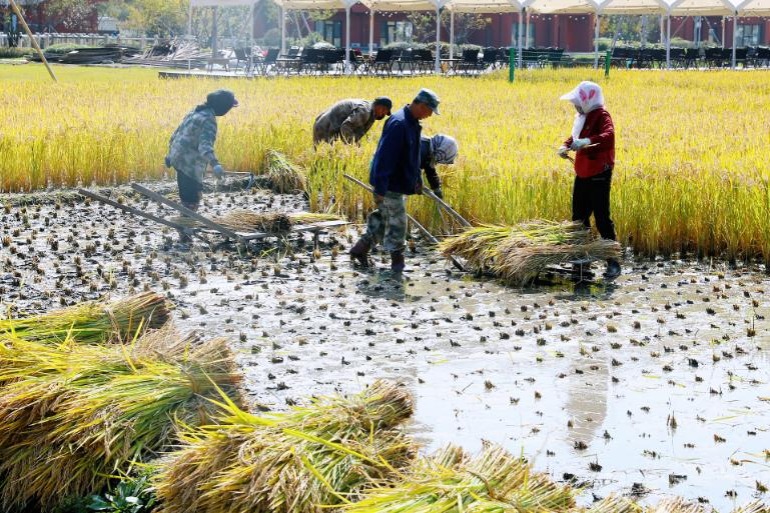China's Inner Mongolia sees decrease in desertified, sandified land


HOHHOT -- The newly released results of the sixth official monitoring of desertification and sandification in North China's Inner Mongolia autonomous region show that the area of desertified and sandified land in the region continues to decrease.
The region's sixth monitoring process started in July 2019 and was completed at the end of 2021.
Ma Qiang, deputy director of the regional forestry and grassland department, said that compared with the results of the fifth monitoring, the area of desertified and sandified land in Inner Mongolia decreased by 24.15 million mu (about 1.61 million hectares) and 14.59 million mu, respectively, with an average annual decrease of 4.83 million mu and 2.92 million mu.
At the same time, the amount of extremely severely desertified land decreased by 15.91 million mu, and the severely desertified land decreased by 18.51 million mu.
The amount of extremely severely sandified land decreased by 21.99 million mu, and severely sandified land decreased by 32.31 million mu, Ma said.
Home to four of the country's major deserts and four major sandy areas, Inner Mongolia has long been plagued by desertification and sandification, and in recent years, the region has stepped up its afforestation efforts.
Currently, the vegetation condition of sandy land in the region continues to improve, while the four major deserts and four sandy lands in the region have been brought under control.
- China-Laos Railway handles over 60 million passenger trips
- Bangladesh's young boy recovering after undergoing specialized surgery in Hubei
- Shanghai pioneers music therapy committee to advance mental health care
- No casualties reported after 5.4-magnitude quake in China's Sichuan
- Village in Guangzhou announces subsidy for patients with mosquito-borne diseases
- Guangdong railways set passenger record during National Day holiday





































